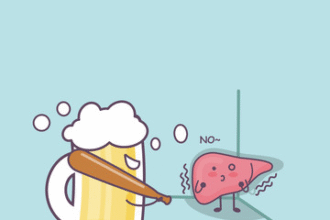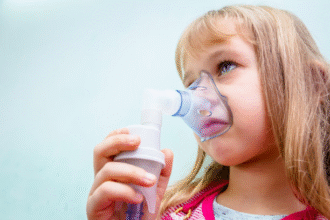Key Points
- GERD results from reflux of gastric contents into the esophagus due to lower esophageal sphincter dysfunction.
- Clinical manifestations include heartburn, regurgitation, dysphagia, and extraesophageal symptoms.
- Diagnosis relies on symptom assessment, endoscopy, pH monitoring, and manometry when indicated.
- Management includes lifestyle modification, pharmacotherapy (antacids, H2RAs, PPIs), and procedural interventions in refractory cases.
- Long-term complications may include esophagitis, strictures, Barrett’s esophagus, and risk of adenocarcinoma.
Introduction
Gastroesophageal Reflux Disease (GERD) is a chronic condition characterized by the backflow of stomach and duodenal contents into the esophagus, causing mucosal injury and symptomatic distress. With rising prevalence globally, GERD significantly impacts quality of life and healthcare utilization.
Pathophysiology
GERD arises when the esophagus’s defensive mechanisms are overwhelmed by aggressive factors:
- Lower Esophageal Sphincter (LES) Dysfunction: Transient LES relaxations or a hypotensive LES allow gastric acid to reflux into the esophagus.
- Hiatal Hernia: Protrusion of the gastric cardia through the diaphragmatic hiatus disrupts LES integrity.
- Impaired Esophageal Clearance: Reduced peristalsis or saliva production delays acid clearance, prolonging mucosal exposure.
- Delayed Gastric Emptying: Prolonged gastric distension increases intragastric pressure, promoting reflux.
- Mucosal Resistance: Altered epithelial barrier function and reduced bicarbonate secretion compromise mucosal defense.
Clinical Features
Typical Symptoms
- Heartburn: Retrosternal burning sensation, often postprandial or nocturnal.
- Regurgitation: Sensation of acidic fluid rising into the throat or mouth.
Atypical and Extraesophageal Manifestations
- Chronic cough, hoarseness, throat clearing.
- Laryngitis, wheezing, asthma exacerbations.
- Dental enamel erosion and globus sensation.
Alarm Features
- Dysphagia or odynophagia.
- Unintentional weight loss.
- Gastrointestinal bleeding or anemia.
- Persistent vomiting or chest pain.
Diagnostic Evaluation
- Empirical PPI Trial: Symptom improvement with a 4–8 week course of proton pump inhibitors supports GERD diagnosis.
- Upper Endoscopy (EGD):
- Indicated for alarm features, refractory symptoms, or long-standing GERD.
- Assesses for esophagitis, Barrett’s esophagus, strictures, and hiatal hernia.
- Ambulatory pH or Impedance-pH Monitoring:
- Gold standard for quantifying acid exposure and symptom correlation in PPI-refractory patients.
- Esophageal Manometry:
- Evaluates LES pressure and motility disorders prior to anti-reflux surgery.
- Barium Swallow Radiography:
- Identifies structural abnormalities and hiatal hernia when endoscopy is contraindicated.
Management
Lifestyle and Dietary Modifications
- Elevate head of bed 6–8 inches and avoid recumbency for 2–3 hours postprandial.
- Weight reduction in overweight patients to decrease intra-abdominal pressure.
- Limit alcohol, caffeine, chocolate, fatty meals, and spicy or acidic foods.
- Avoid tight-fitting garments around the waist.
Pharmacotherapy
| Class | Agents | Mechanism | Indications |
|————————-|——————————–|———————————–|————————————————|
| Antacids | Calcium carbonate, magnesium | Neutralize gastric acid | Mild, intermittent symptoms |
| H2-Receptor Antagonists | Ranitidine, famotidine | Reduce acid secretion | Mild-to-moderate GERD, nocturnal symptoms |
| Proton Pump Inhibitors | Omeprazole, esomeprazole | Irreversibly inhibit H⁺/K⁺ ATPase | Moderate-to-severe GERD, erosive esophagitis |
| Prokinetic Agents | Metoclopramide, domperidone | Enhance gastric emptying, LES tone| Adjunct in delayed gastric emptying |
Endoscopic and Surgical Interventions
- Endoscopic Radiofrequency Ablation (Stretta): Reduces LES relaxations by delivering thermal energy.
- Transoral Incisionless Fundoplication (TIF): Creates an anti-reflux barrier endoscopically.
- Laparoscopic Nissen Fundoplication: 360° wrap of gastric fundus around LES; gold standard surgical treatment.
- Magnetic Sphincter Augmentation (LINX): Implantation of magnetic beads to reinforce LES.
Complications
- Erosive Esophagitis and Ulceration: May lead to bleeding and strictures.
- Peptic Stricture: Fibrotic narrowing causing dysphagia.
- Barrett’s Esophagus: Intestinal metaplasia with potential for dysplasia and adenocarcinoma.
- Extraesophageal Sequelae: Aspiration pneumonia, chronic laryngitis, reactive airway disease.
Prevention and Follow-Up
- Vaccination: Pneumococcal and influenza vaccines for at-risk patients.
- Surveillance Endoscopy: In patients with confirmed Barrett’s esophagus according to dysplasia grade.
- Long-Term PPI Use: For chronic, severe symptoms; monitor for potential adverse effects (e.g., B12 deficiency, osteoporosis).
Patient Education and Self-Management
- Adherence to medications and lifestyle advice is essential for symptom control.
- Keep a symptom diary to identify and avoid personal triggers.
- Recognize alarming signs (e.g., dysphagia, bleeding) that require prompt medical attention.
Conclusion
GERD is a prevalent and potentially serious condition. A multifaceted approach—combining lifestyle changes, tailored pharmacotherapy, and procedural interventions—optimizes symptom relief, prevents complications, and improves patient quality of life.
References
- Katz PO, Gerson LB, Vela MF. Guidelines for the Diagnosis and Management of Gastroesophageal Reflux Disease. Am J Gastroenterol. 2022;117(1):27-56.
- Vakil N, van Zanten SV, Kahrilas P, Dent J, Jones R. The Montreal Definition and Classification of GERD. Am J Gastroenterol. 2006;101(8):1900-1920.
- Patti MG, Fisichella PM, Perretta S, et al. Transoral incisionless fundoplication: clinical results in 200 patients. Surg Endosc. 2017;31(4):1615-1622.
- Gyawali CP, et al. American College of Gastroenterology Clinical Guideline for the Diagnosis and Management of Gastroesophageal Reflux Disease. Am J Gastroenterol. 2023;118(5):765-788.







